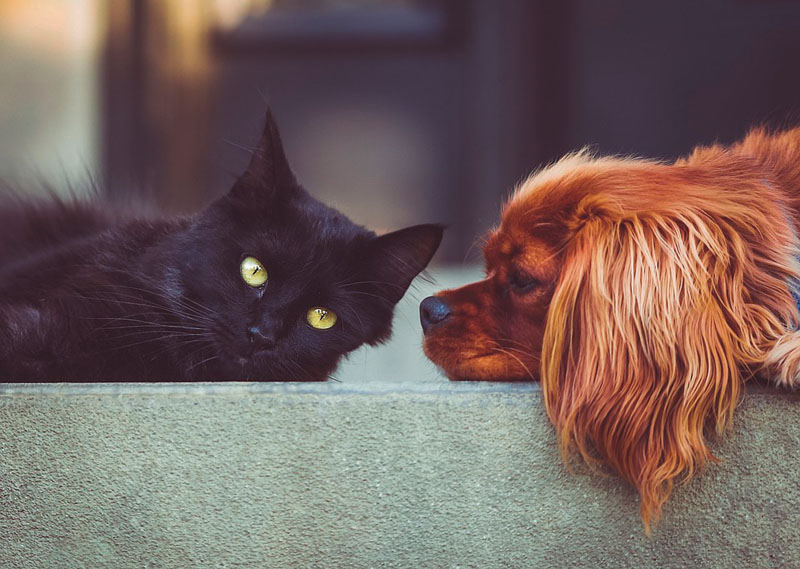 By Robin Sturtz
By Robin Sturtz
It is easy to ascribe certain changes in behavior, nutrition or general health to “old age.” Old age is not a disease, however. Just because our pets are older, we shouldn’t assume they’ll be infirm. A senior dog or cat (starting at approximately age 7 years, 6 years in very large/giant breeds) should have a physical examination by a veterinarian at least twice a year, and blood work at least annually (more often if there are any health problems). Here are some signs your pet may not be feeling well.
Increased sleeping
It is not “normal” for animals to start sleeping more than they usually do. Increased sleeping is often a clue that the dog or cat is not feeling well. Hiding, particularly in cats, is almost always an indication of illness (unless they’re avoiding a toddler or a new dog). Metabolic diseases are often the cause of increased sleeping, as is cardiac disease.
Refusing walks or difficulty moving
Moving slowly is often an indication of pain, particularly arthritis. Arthritis is very common in older dogs and cats. We have many good treatments for arthritis that can help your companion lead a more comfortable life. Not all of them are drugs, and some of them are not very expensive. A dog who is refusing walks is most likely not feeling well, and there’s no reason his/her age should prevent us from trying to help.
Changes in appetite
Significant changes in appetite are also a potential indicator of illness. Everything from hormonal imbalances (thyroid, adrenal gland dysfunction), to kidney disease, to inflammatory bowel disease, to cancer, can be associated with changes in food intake. Most of these are easily treated, some less so. However, if the effort is made to identify the cause of the problem, we can at least get a sense of how to make the patient happier and more comfortable, and avoid treating problems that aren’t there.
Change in water intake
Related to food intake is the issue of water intake. Older dogs and cats don’t change their water intake just because they’re old—or bored. There is usually some physical component underlying this change. Kidney disease can be associated with increased water intake at the beginning, and decreased water intake later on. Increased water intake is associated with diabetes, hormone gland dysfunction and infections. Decreased water intake can be associated with heart disease, cancer and pain.
Changes in vision/hearing
Eyesight and hearing can decline as cats and dogs age, just as they can in people. If you suspect visual problems, visit your veterinarian and have them take a look at the area on and around the retina. Retinal hemorrhage is associated with high blood pressure, as well as certain viral diseases. If an animal has trouble seeing, it is important to keep everything in the house in the same place (furniture, food bowls).
Regarding hearing in the older dog or cat, the cause is indeed most likely age-related. There are physical causes of hearing loss other than age, but they are more common in younger animals.
Unusual new behaviors
One thing that is specifically related to age is the incidence of new behaviors suggesting confusion, or unfamiliarity with everyday places or activities. Many of these animals will vocalize, often in the middle of the night and for no apparent reason, and then stop as soon as they see their person or feel their touch. This is referred to as cognitive dysfunction. It is as if the pet suddenly does not remember where he or she is, or what he or she should do next.
Some things that can be helpful: leaving on a nightlight, particularly in the room or hallway where the problem usually occurs; use of a spray or diffuser that releases dog or cat pheromone (an essential odor that only members of the same species can smell, and that can be very calming); having a strict routine at night; and leaving open access for the dog or cat to their persons.
Give your pet all the TLC you can, and they’ll return the favor.
Dr. Robin Sturtz is the director of the LIU Post Veterinary Technology Program. She is also president of the Long Island Veterinary Medical Association.


















